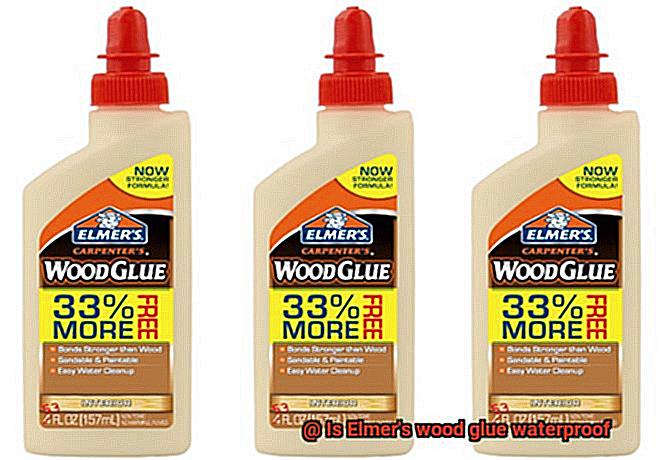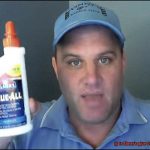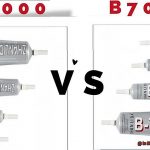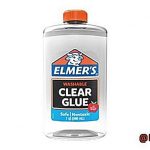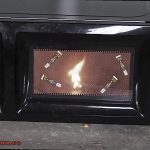Are you a woodworking enthusiast looking for the perfect glue to ensure a long-lasting bond between your wood pieces? With so many options available, it can be challenging to decide which one to choose, especially when you’re in need of a waterproof adhesive. So, if you’re considering Elmer’s wood glue for your next project, the big question is: Is Elmer’s wood glue waterproof?
Elmer’s is a renowned brand popularly known for its high-quality glue products, with their wood glue being a top favorite among woodworkers. It promises to bond wood pieces together with ease and strength. But does it hold up against water? That’s what DIY enthusiasts want to know.
In this blog post, we’ll dive deep into everything you need to know about Elmer’s wood glue and its waterproofing properties. We’ll take a closer look at how Elmer’s performs when exposed to water, the different types of Elmer’s wood glues available, and tips to ensure a strong bond with this adhesive. Whether you’re new to woodworking or an experienced pro, keep reading to find out if Elmer’s wood glue is the right choice for your water-resistant woodworking project.
Types of Elmer’s Wood Glue
Contents
- 1 Types of Elmer’s Wood Glue
- 2 Is Elmer’s Wood Glue Waterproof?
- 3 Benefits of Using Elmer’s Wood Glue
- 4 How to Apply Elmer’s Wood Glue for Maximum Effectiveness
- 5 Different Uses for Elmer’s Wood Glue
- 6 Tips and Tricks for Working with Elmer’s Wood Glue
- 7 Alternatives to Elmer’s Wood Glue
- 8 Safety Considerations When Using Elmer’s Wood Glue
- 9 Conclusion
Woodworkers know that choosing the right glue is crucial to the success of any project. Elmer’s is a popular brand that offers a range of wood glues with unique properties to cater to different needs and preferences. In this article, we will explore the five types of Elmer’s wood glue and their distinctive features to help you find the perfect match for your project.
- Carpenter’s Wood Glue Max: This waterproof adhesive is ideal for both interior and exterior projects. It is stronger than traditional wood glues and can withstand exposure to outdoor elements like rain, snow, and humidity. The glue dries clear and is sandable and paintable, making it suitable for various woodworking applications.
- Carpenter’s Wood Glue Max Interior/Exterior: Similar to Carpenter’s Wood Glue Max, this version is specifically designed for use on both interior and exterior projects. It provides a durable bond that can resist harsh weather conditions without breaking down.
- Carpenter’s Wood Glue Max Interior: This glue is designed for interior projects only. It provides a strong bond that can be sanded and painted over once dry.
- Carpenter’s Wood Glue: This classic wood glue has been trusted by woodworkers for decades. It provides a strong bond suitable for a wide range of woodworking projects.
- Carpenter’s Interior Wood Glue Max: Specifically designed for interior woodworking projects, this glue dries clear and can be sanded and painted over once dry.
Each type of Elmer’s wood glue has its unique features that make it suitable for specific woodworking projects. If you are working on an outdoor project exposed to moisture and humidity, Carpenter’s Wood Glue Max or Carpenter’s Wood Glue Max Interior/Exterior are the best choices. For indoor projects where you want a glue that can be sanded and painted over, Carpenter’s Wood Glue Max Interior or Carpenter’s Interior Wood Glue Max are excellent options.
It is worth noting that even with waterproof wood glue, proper application is crucial to achieving a strong and long-lasting bond. The surfaces being bonded must be clean, dry, and free from any dirt, dust, or debris. Apply a thin layer of glue and allow it to dry completely before adding any additional layers or coatings.
In conclusion, selecting the right type of Elmer’s wood glue for your woodworking project can make all the difference. Take the time to read the label carefully and consider the unique features of each glue before making your decision.
Is Elmer’s Wood Glue Waterproof?
You may have some questions about the strength and durability of Elmer’s Wood Glue. As an expert in this field, I’m here to clarify whether Elmer’s Wood Glue is waterproof or not and discuss some of the alternative products available.
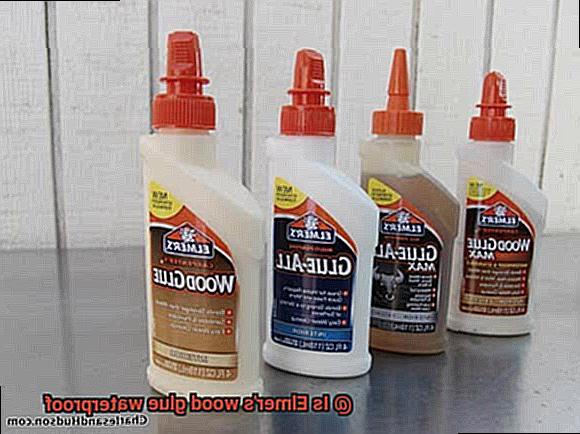
Firstly, it’s important to know that not all types of Elmer’s Wood Glue are created equal. The classic Carpenter’s Wood Glue is not waterproof, as it is water-soluble and can easily be cleaned up with water before it dries. This means that if your project will be exposed to water or moisture, the bond created by Elmer’s Wood Glue may weaken over time.
However, fear not. Elmer’s has developed a solution for this issue. They offer a product called Carpenter’s Wood Glue Max, which provides a stronger and more water-resistant bond than traditional wood glue. Once it dries, it can tolerate some exposure to moisture without losing its bonding strength.
It’s crucial to choose the right type of adhesive for your woodworking project based on its intended use and the level of exposure to moisture or water it may face. Here are some key points to keep in mind:
- Elmer’s Wood Glue is not waterproof.
- Carpenter’s Wood Glue Max is designed to provide a stronger and more water-resistant bond than traditional wood glue.
- Even with waterproof wood glue, proper application is key. Always read the instructions carefully and apply the glue evenly for the best results.
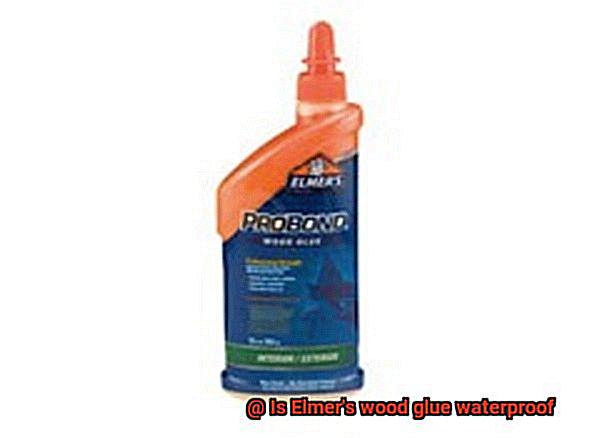
Benefits of Using Elmer’s Wood Glue
Look no further than Elmer’s Wood Glue – a popular brand that has been trusted by woodworkers and craftsmen alike for its numerous advantages.
Firstly, Elmer’s Wood Glue is incredibly strong and creates a durable bond between pieces of wood. This feature is especially important in furniture making and other woodworking projects where you need a hold that can withstand weight and pressure. Additionally, this adhesive dries clear, making it ideal for visible glue areas where you want the finished product to look seamless.
Moreover, Elmer’s Wood Glue is easy to use. With the option of applying with a brush or spreader, it dries quickly, making it perfect for projects where time is of the essence. Plus, it’s non-toxic and safe for use around children and pets, making it an eco-friendly option for family-friendly craft projects.
While the waterproofness of Elmer’s Wood Glue may be up for debate, its other benefits make it a popular choice among woodworkers and craftsmen. However, if you require an adhesive that can withstand water exposure, Carpenter’s Wood Glue Max may be a better option.
How to Apply Elmer’s Wood Glue for Maximum Effectiveness
Applying Elmer’s wood glue for maximum effectiveness is crucial for a strong and durable bond. Here are five sub-sections to guide you through the correct application process:
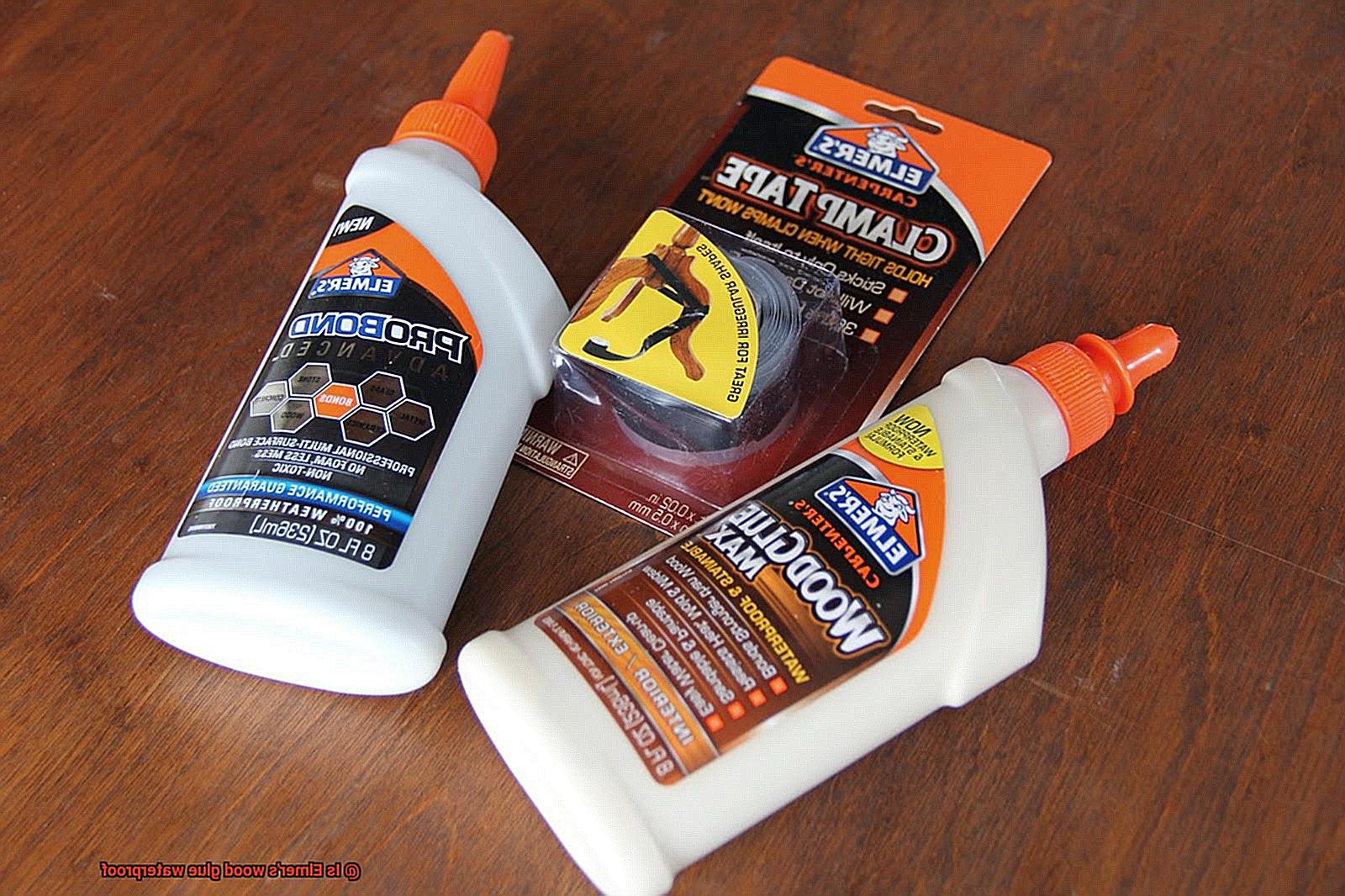
Clean the Surfaces
The first step in applying Elmer’s wood glue is to ensure that the surfaces you plan to glue are clean and free of debris. Any dust or dirt on the surfaces can prevent the glue from adhering properly. Use a clean cloth or brush to wipe away any particles, or use sandpaper to remove any roughness.
Apply Glue Evenly
Once the surfaces are clean, apply a thin layer of glue evenly on one of the surfaces you intend to join. Avoid using too much glue as this can result in weak joints and excess glue squeezing out of the joint. Using about one drop of glue per square inch of surface area is recommended.
Join the Surfaces Together
After applying the glue, join the two surfaces together firmly and hold them in place for at least 20-30 minutes. Clamps can also be used to keep the pieces in place while the glue dries. Ensure that there is good contact between the two surfaces to create a strong bond.
Wait for It to Dry
Allow the glue to dry completely before removing the clamps. Depending on your workspace’s temperature and humidity levels, this can take anywhere from 30 minutes to several hours. It’s recommended to wait at least 24 hours before subjecting the joint to any stress or strain.
Use Moisture
Elmer’s wood glue requires moisture to activate its bonding properties effectively. Dampen one of the surfaces being bonded before applying the glue, as this will help create a stronger bond.
Different Uses for Elmer’s Wood Glue
Elmer’s wood glue is the answer to your search for a versatile and multi-purpose adhesive that can elevate your woodworking projects to the next level.
One of the most common uses of Elmer’s wood glue is for furniture repairs. Whether you’re dealing with a wobbly chair leg or a loose table top, applying this glue can help fix the problem. The glue seeps into the pores of the wood and creates a strong bond that can withstand weight and pressure, ensuring that your furniture will remain steady and durable.
But that’s not all. Elmer’s wood glue is also perfect for laminating wooden surfaces together. If you want to create a tabletop by gluing several pieces of wood together, this glue can help you achieve your desired result. It creates a strong bond that dries clear, so you won’t see any residue or marks left behind on the surface of the wood.
Elmer’s wood glue can also be used to fill gaps in wooden surfaces. If you have a small crack or hole in a piece of wood, applying some wood glue can help to fill it in and make it as good as new. Once the glue dries, you can sand down the surface to make it smooth and even, ensuring that your woodworking project looks flawless and seamless.
Finally, Elmer’s wood glue is perfect for creating decorative wooden structures such as picture frames or sculptures. Its clear drying properties and strong bonding capability make it an ideal choice for creating long-lasting and durable wooden creations that will stand the test of time.
Tips and Tricks for Working with Elmer’s Wood Glue
If you’re working with Elmer’s wood glue, you want to make sure your project turns out as strong and durable as possible. Here are some tips and tricks to help you achieve the best results.
Clean surfaces are a must
Before applying any glue, make sure the surfaces you’re bonding are clean and free of debris. Use a damp cloth to wipe them down and give them enough time to dry completely. This will ensure that the glue adheres properly and creates a strong bond.
Apply the glue evenly
To create a strong bond, apply a thin, even layer of Elmer’s wood glue to both surfaces you’re bonding with a brush or roller. Be careful not to put too much glue as it can weaken the bond. This will help ensure an even drying process, without bumps or lumps in your finished product.
Clamp the surfaces together
After applying the glue, clamp the surfaces tightly together for at least 30 minutes to an hour. This will give the glue enough time to dry and set, creating a strong and durable bond that will last for years.
Add water or vinegar for better results
If you find that your glue is drying too quickly, you can add a small amount of water to thin it out and extend the working time. Alternatively, if you need a stronger bond or faster drying time, try adding a small amount of vinegar to the glue.
Clean up excess glue immediately
Accidents happen, but if you get excess glue on unintended surfaces or apply too much, be sure to clean it up immediately with a damp cloth or sponge. Once Elmer’s wood glue dries, it can be difficult or impossible to remove without damaging the surface it is bonded to.
Choose the right formula for your project
It’s important to choose the right formula of Elmer’s wood glue for your project. If your finished product will be exposed to water or moisture, use a waterproof formula such as Elmer’s Carpenter’s Wood Glue Max Outdoor. For indoor projects or those not exposed to moisture, Elmer’s Carpenter’s Wood Glue Max Interior will suffice.
Alternatives to Elmer’s Wood Glue
Fear not, there are alternatives out there that can provide the same strong bonding properties with the added benefit of being waterproof. Let’s dive into three options: Titebond III Ultimate Wood Glue, Gorilla Wood Glue, and epoxy.
If you’re working on an outdoor project that will be exposed to water or moisture, Titebond III Ultimate Wood Glue is a great alternative. Its waterproof properties make it an excellent choice for things like garden boxes or outdoor furniture. Unlike Elmer’s wood glue, Titebond III has a longer open time that gives you more time to make adjustments before the glue sets.
Gorilla Wood Glue is another excellent choice for indoor and outdoor projects alike. Its clear drying formula makes it perfect for projects where the glue will be visible. Plus, it’s FDA approved for indirect food contact, making it ideal for cutting boards and kitchen utensils. Gorilla Wood Glue dries to a natural color and is made for hard and softwoods, particleboard, MDF, plywood, and other porous materials.
Epoxy is another alternative for waterproof bonding in woodworking projects. It comes in two parts that need to be mixed together before application and offers a strong bond that can withstand exposure to water. Epoxy is perfect for projects that require extra durability, such as boats or outdoor structures. However, it can be more difficult to work with than traditional wood glues and may require more time and precision during application.
Safety Considerations When Using Elmer’s Wood Glue
While this glue is an excellent choice for woodworking, there are some crucial safety considerations that you must keep in mind to ensure a safe and healthy experience.
First and foremost, ventilation is key. Elmer’s wood glue contains solvents that can cause respiratory irritation if inhaled in large amounts. To avoid any respiratory discomfort, always work in a well-ventilated area. Open up windows or use fans to circulate the air and keep it fresh.
Protective gear is also essential. When working with Elmer’s wood glue, make sure to wear protective gloves and eye gear. The glue can cause skin irritation and severe eye damage if it comes into contact with them. So, protect yourself by wearing gloves and goggles.
It’s also crucial to avoid ingesting or swallowing the glue at all costs. Elmer’s wood glue can cause nausea, vomiting, and diarrhea if ingested. Ensure that food items are kept separate from the glue and never ingest it.
Proper storage is vital for keeping yourself and others safe. Elmer’s wood glue should be stored in a cool, dry place, away from children and pets. The glue can be toxic if ingested in large quantities, so make sure to store it safely.
obsN4RSwnpA” >
Conclusion
In conclusion, Elmer’s wood glue is a go-to choice for many woodworkers due to its impressive strength, ease of use, and durability. However, when it comes to waterproofing properties, not all Elmer’s wood glue products are created equal. The classic Carpenter’s Wood Glue may not hold up against water or moisture in the long run, but don’t fret – Elmer’s has developed a solution with their Carpenter’s Wood Glue Max. This enhanced formula provides a stronger and more water-resistant bond than traditional wood glue.
Proper application is key when working with any adhesive, including Elmer’s wood glue. Make sure that the surfaces being bonded are clean, dry, and free from any debris or dirt before applying a thin layer of glue evenly. Allow it to dry completely before adding additional layers or coatings.
If you require an adhesive that can withstand water exposure, there are alternative options available such as Titebond III Ultimate Wood Glue, Gorilla Wood Glue, and epoxy. It is essential to choose the right type of adhesive for your woodworking project based on its intended use and potential exposure to moisture or water.
Remember to prioritize safety when using Elmer’s wood glue by working in a well-ventilated area and wearing protective gear such as gloves and goggles. Ingestion or swallowing of the glue should be avoided at all costs, and it should be stored safely away from children and pets.
In short, while not all Elmer’s wood glues are waterproof, their Carpenter’s Wood Glue Max offers an excellent solution for those seeking added water resistance.

